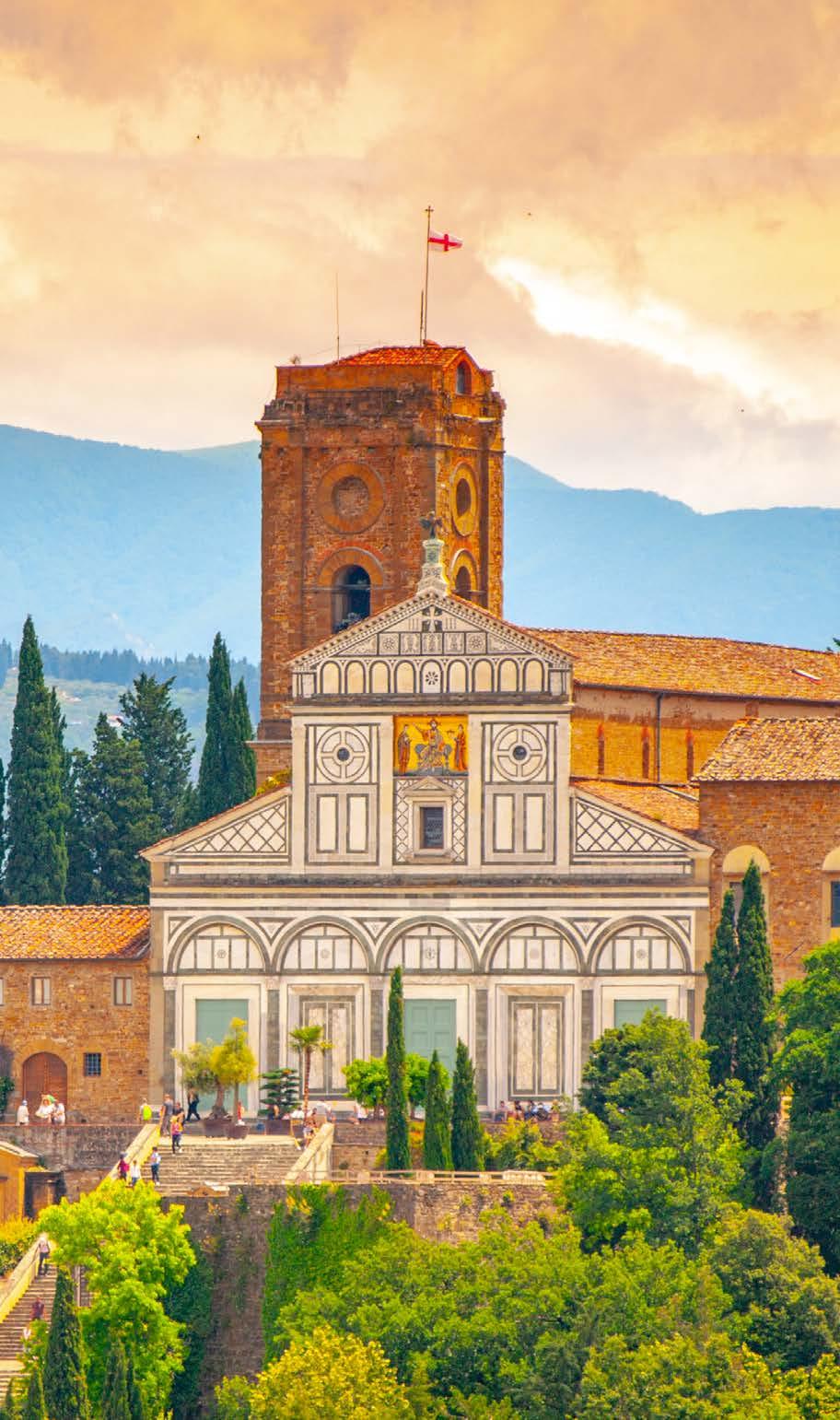
2 minute read
PANORAMA
SAN MINIATO AL MONTE
THE BEAUTY OVERLOOKING FLORENCE
Advertisement
−The Abbey of San Miniato al Monte is a splendid example of Florentine Romanesque and is located on the hill overlooking the left bank of the city. From here you can enjoy a beautiful panoramic view of Florence, from the Duomo to Palazzo Vecchio, to the ancient walls surrounding the city.
−What is perhaps the truest meaning of San Miniato al Monte is revealed to us by the inscription written on the eastern door, which for centuries has advised wayfarers with the words: “Haec est Porta Coelis” or “This is the Door of Heaven” in Latin.
−Built between the 11th and 13th centuries, the exterior is decorated with multicolour green and white marble forming geometrical designs, similar to those of the façades of Santa Croce and Santa Maria Novella.
−The interior is in Romanesque style with three aisles, a raised chancel and a crypt that holds incredible treasures, such as the Chapel of the Cardinal of Portugal, built between 1461 and 1466 by Antonio Manetti. And then there is the monastic choir, a wooden work from the 15th century, where for centuries the monks, concealed from the pilgrims’ eyes, have intoned Gregorian chants.
−The monumental cemetery, in front of and behind the church, contains the tombs of many illustrious personalities, including that of Carlo Collodi, the author of Pinocchio.
−The monks also run the Monastic Pharmacy where it is possible to purchase, among other things, beeswax candles, chocolate sweets, jam tarts and biscuits, all hand-crafted by the monks themselves.
Abbey of San Miniato al Monte Via delle Porte Sante, 34 www.sanminiatoalmonte.it
PALAZZO PITTI MUSEUMS
A RENAISSANCE MASTERPIECE

A palace for three dynasties, this extraordinary building is located in the Oltrarno, at the foot of Boboli Hill. The famous Boboli Gardens, which are the park of the palace, a genuine open-air museum, take their name from this hill. Palazzo Pitti currently contains four different museums.
Treasures of the Grand Dukes (ground floor and mezzanine) Conserved in what were the summer apartments of the Medici family are the precious “Treasures of the Medici”: vases made of semi-precious stones, rock crystals, ambers and ivories, the exceptional collection of Oriental porcelains; there is also the silverware of the so-called “Treasure of Salzburg”, an important collection of jewels created between the 17th and 20th centuries, and a significant section dedicated to contemporary jewellery.
Palatine Gallery and Monumental Apartments (noble floor) The 14 sumptuously furnished rooms of the Royal Apartments offer a fascinating blend of styles. The “Quadreria”, the Picture Gallery, established between the 18th and 19th centuries by the Lorena family, includes the world’s largest concentration of works by Raphael, as well as paintings by Titian, Tintoretto, Caravaggio and Rubens.
Gallery of Modern Art (second floor) It houses masterpieces from Neoclassicism to the 1930s, with an important group of paintings by the Macchiaioli school.
Museum of Fashion and Costume (Palazzina della Meridiana) This museum possesses a stock of six thousand items, including ancient clothing, theatrical costumes and fashion accessories from the 18th century to today, in addition to underwear, jewels and costume jewellery. Included among the costumes are the 16th-century burial clothes of Cosimo I de’ Medici, Eleonor of Toledo and their son.







